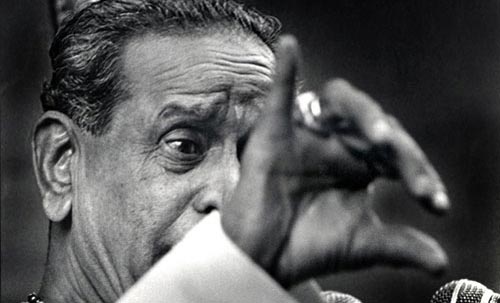The Padma Shri has lost its glory: Buddhadeb
Posté dans divers, HINDOUSTAN par kerbacho - Date : mars 23rd, 2011Sarodia Pt Buddhadeb Dasgupta is known to speak his mind. On a warm summer morning, he agreed to engage in a candid conversation with CT about missing out on life’s opportunities, not being able to work with Satyajit Ray and being snubbed by critics, most part of his life
source : http://timesofindia.indiatimes.com/
You could have been a part of Satyajit Ray’s « Pather Panchali ». What happened exactly?
One day, as I was coming back from office, I noticed a taxi waiting outside my home with a Bengali gentleman, in dhuti panjabi, inside. My friend, photographer Subrata Mitra, asked if I would play for a film that Satyajit babu was working on. In those days, we could do nothing without the permission of our gurus. I said ‘no’ because my guru, Pt Radhika Mohan Moitra, had expressed his displeasure at this. That gentleman in the taxi was Satyajit Ray. I really regret that this happened because of my gurubhakti! I consider it as part of my gurudakshina.
Did you get any opportunities to score music for films after this incident?
No. It needs a lot of prospecting. And frankly, at this age, I neither have the time, nor the mood for doing such a thing.
Do you feel that you started experimenting with Rabindrasangeet a little too early? That it would have been easier to work on them because of the copyright being lifted?
I refrained from playing Rabindrasangeet note to note. When Ustad Vilayat Khan presented the song, ‘Bhenge mor ghorer chabi’ on the sitar, I was inspired and started experimenting with Tagore’s songs. My first composition was ‘Sedin dujone dulechhinu boney’, in Raag Pilu. In 1978, I sent this tune as the concluding piece for the National Programme on All India Radio. I was slightly apprehensive as the radio panel had some eminent musicians who would frown at my audacity for having experimented with Tagore’s songs. To my utter surprise, they never challenged me! Later, Suchitra Mitra expressed her desire for doing a show with me after listening to my compositions. We performed together in 1985. I played the sarod, V Balsara was on the piano and Suchitradi on vocals. The programme got great reviews so I requested Suchitradi if we could do more such programmes and possibly, come out with an album. Strangely, she gave me the cold shoulder. After some months, she did a grand show with Ustad Amjad Ali Khan, who, incidentally, also incorporated notes from Rabindrasangeet. As luck would have it, critics started raving and it was understood he was the first to pioneer this on the sarod. Again, sadly, I missed out.
Did you, at any point of time after rejecting the Padma Shri, feel that perhaps you missed out again?
I am very happy with my decision. When I refused, I had said, ‘All these days, the Padma Shri had been awarded to people half my age, most of who, were undeserving of such great an award. Suddenly, presenting this award to me, as I head towards the cremation ground, was ridiculous.’ I remember telling them that if I accept this now, I would become a comic figure to the whole music community. I think, the Padma Shri has lost its glory. If someone has to qualify for the Padma Shri, he has to have the advantage of the right channels.
Channels?
Either a very powerfully placed government employee has to recommend your name. Or the community you belong to, has to vociferously push you forward. The state government’s support also helps, sometimes.
How do you think Bengal, as a state, has valued classical musicians in comparison to other states?
Bengali classical musicians have been skimpily appreciated. In other states like Maharashtra and some South Indian states, the whole community will back you if you happen to be in the race for the Padma Shri. I remember Bhimsen Joshi once leapt on to the stage to tune the tanpura of a young performer.
Do you think that it is the job of a classical musician to entertain as well?
Not at all! There have been musicians who have been extroverts on the stage, playing to the audience for an applause. Entertain? Yes, but only by appealing to the hearts of the listeners.
Some critics of today might not agree with what you say. They call you a recluse…
I have never tried to rebel against criticisms despite being unfairly judged. Neither have I said anything politically incorrect nor have I desisted from saying certain unpalatable truths. Unlike other musicians, I had a regular job, and a very unmusical one too. So I couldn’t mingle with the music fraternity.
Were you in some kind of a comfort zone, then?
My regular job (in a power distribution company) earned me my daily bread. Judging by the way Bengali musicians and artistes have been treated so far, I would never have been able to live comfortably if I didn’t have this job. I had to do it because I was afraid of starving to death. Any other musician, given my circumstances, would have perished. Ustad Ali Akbar Khan, Pt Ravi Shankar, etc were definitely more courageous, had circumstances in their favour and the required amount of time to devote to music. Music is a very jealous task mistress. However much I rant against my job, it did give me the courage to jump into music as a whole time career at 55. And at that age, how much fame can you attain? Half your life has gone!
The first two parts of your autobiography are out. When can we expect the third?
I never consciously tried to be a writer. I write just as I speak. I am working on the third part and it should be out soon.
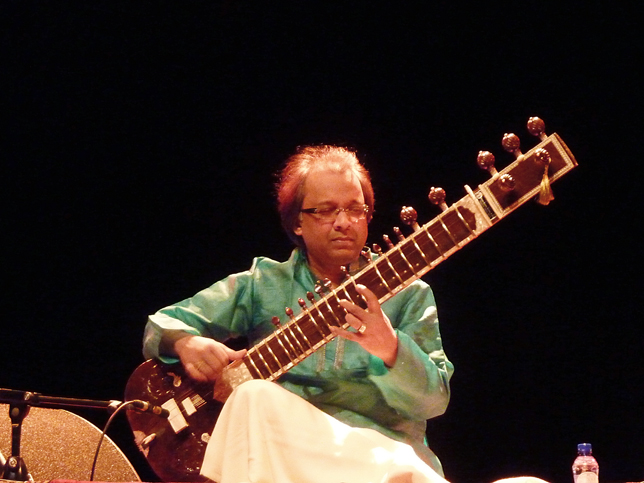
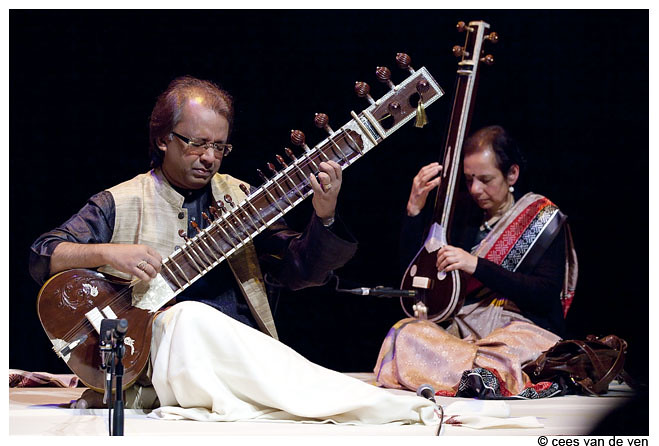
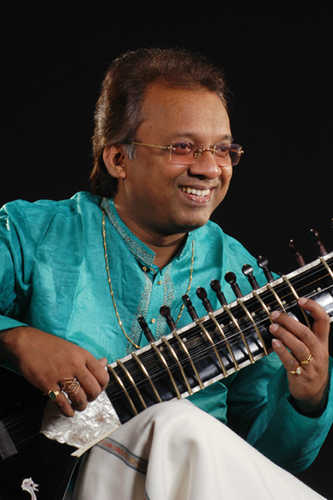 Two-in-one Pandit : Nayan Ghosh (1956) est une figure exceptionnelle de la scène musicale classique indienne en ceci qu’il est reconnu par ses pairs comme maître autant du tabla, instrument à percussion sur lequel il a accompagné les plus grands solistes dès son plus jeune âge, que du sitar, instrument à cordes emblématique de la musique indienne, où la concurrence pourtant ne manque pas.
Two-in-one Pandit : Nayan Ghosh (1956) est une figure exceptionnelle de la scène musicale classique indienne en ceci qu’il est reconnu par ses pairs comme maître autant du tabla, instrument à percussion sur lequel il a accompagné les plus grands solistes dès son plus jeune âge, que du sitar, instrument à cordes emblématique de la musique indienne, où la concurrence pourtant ne manque pas.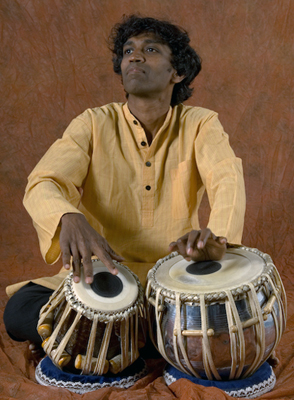 Two-in-one Pandit
Two-in-one Pandit